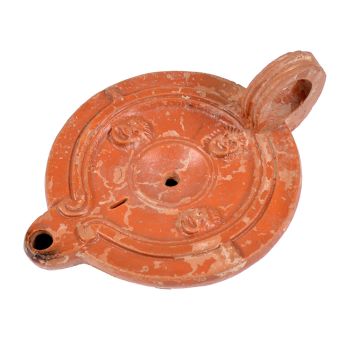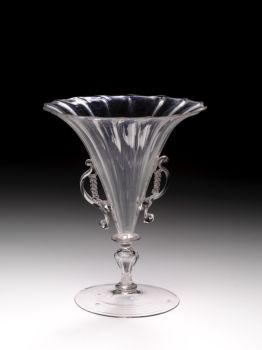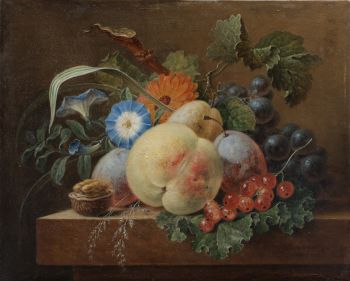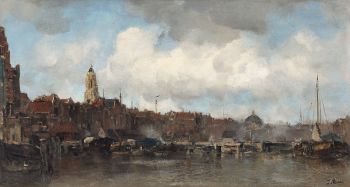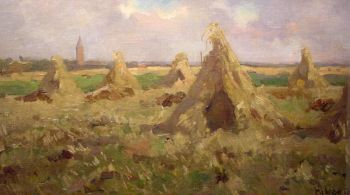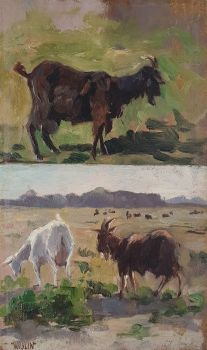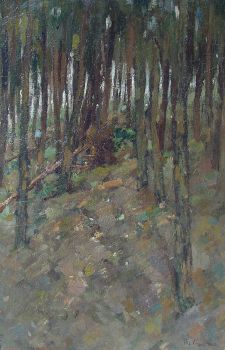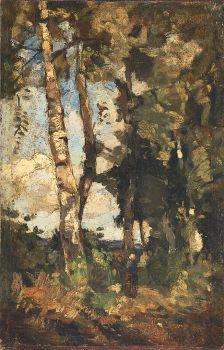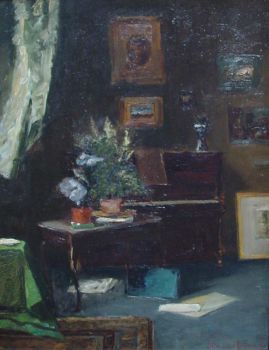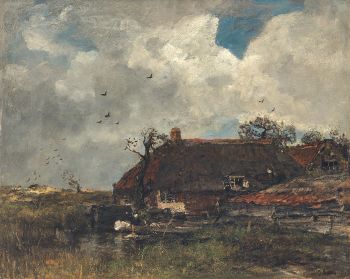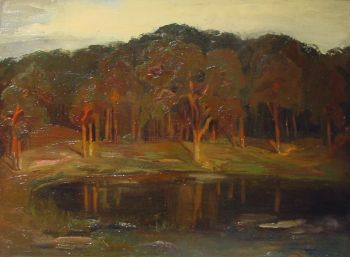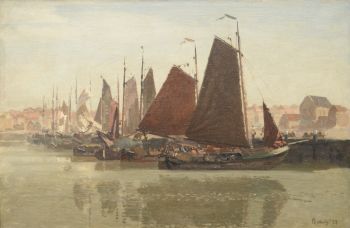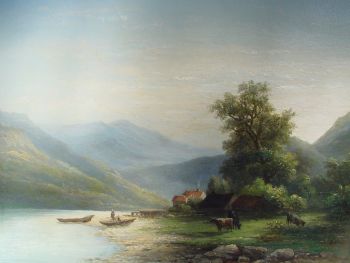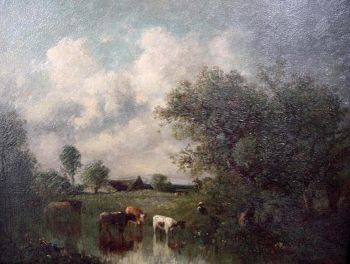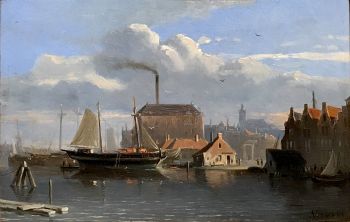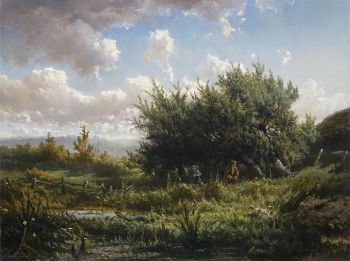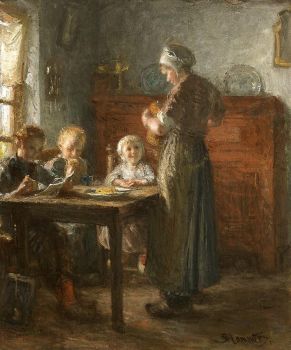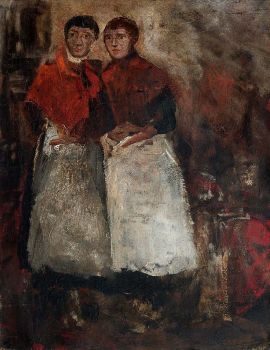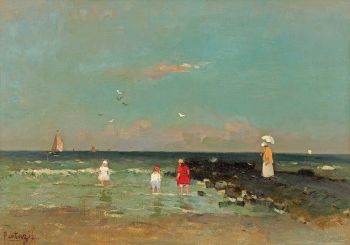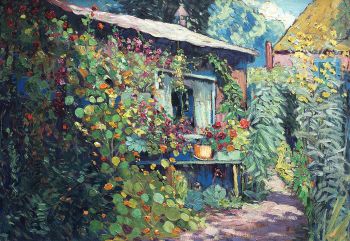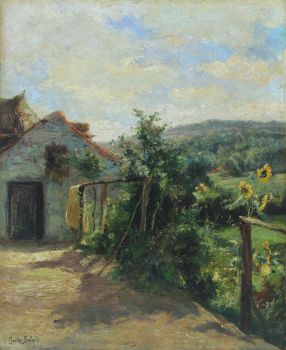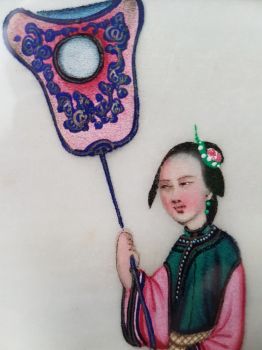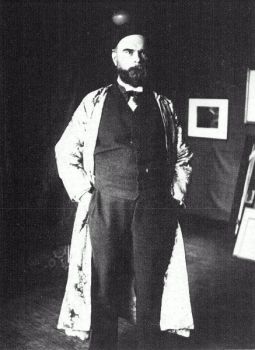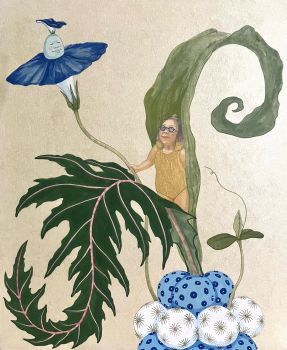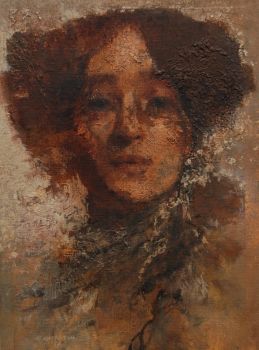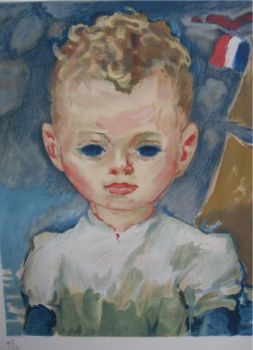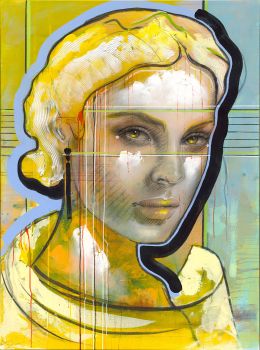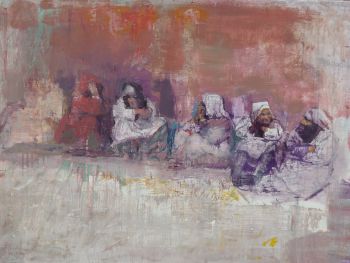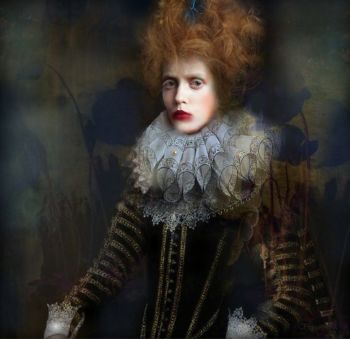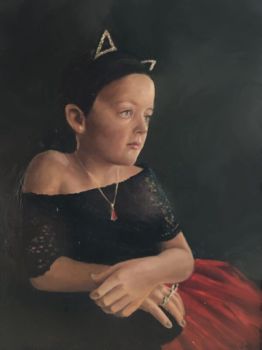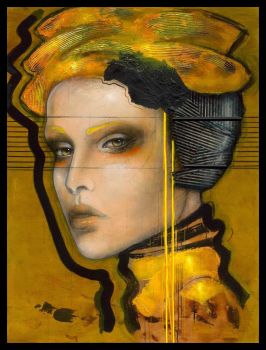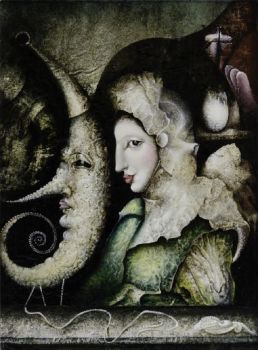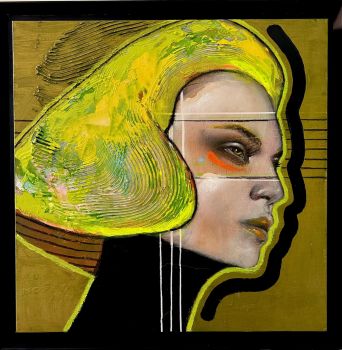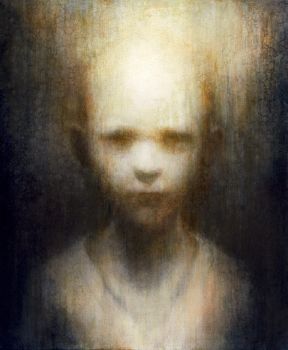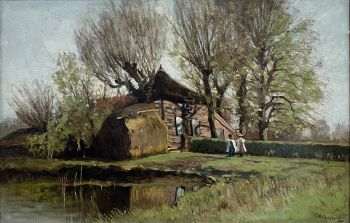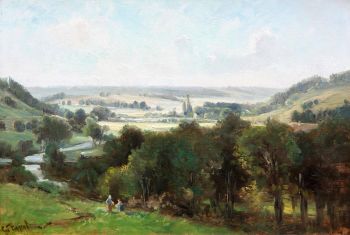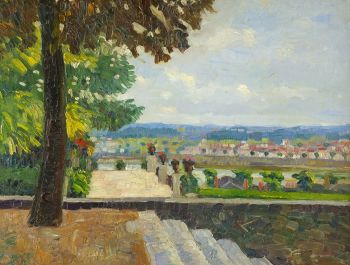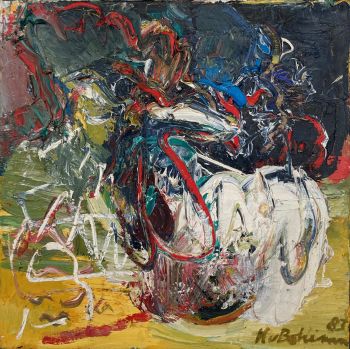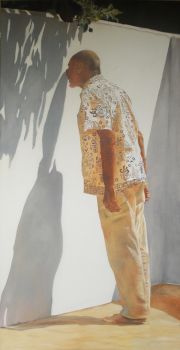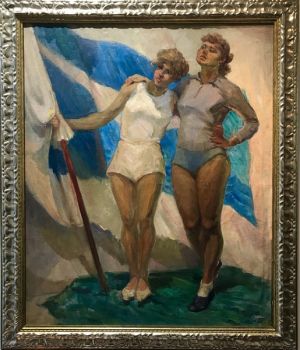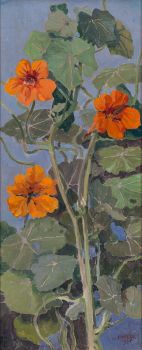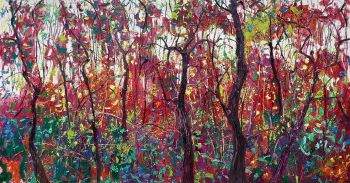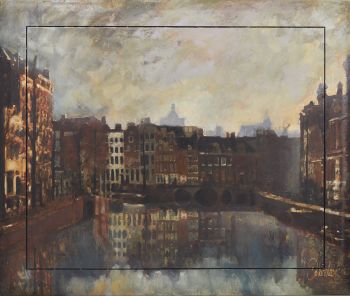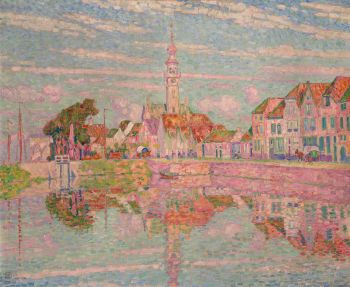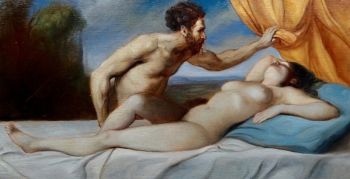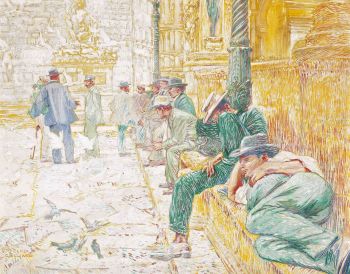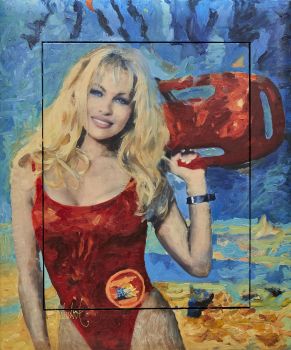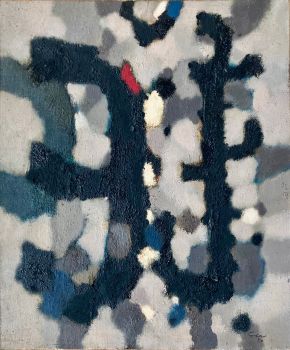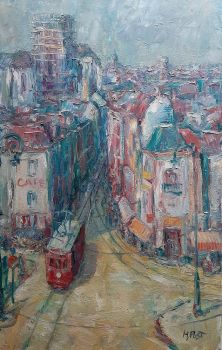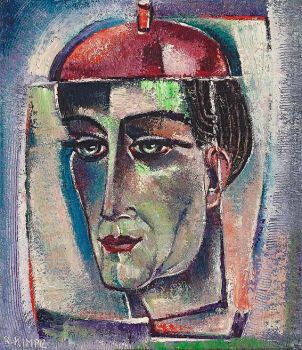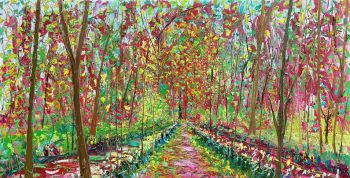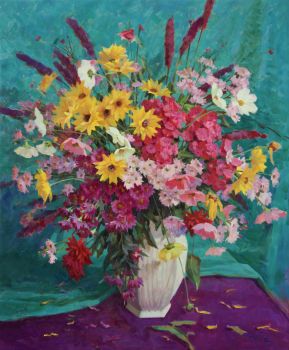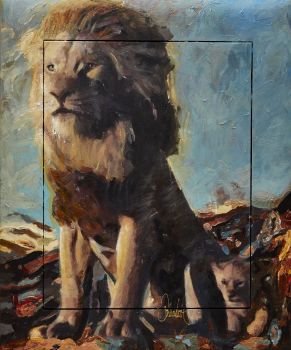19th Century French School Portrait of a flower seller 1790 - 1840
Unknown artist
Original oil on canvas
59 ⨯ 53 cm
ConditionGood
€ 4.995
Olischlager Antiquairs
- About the artworkFrench School, 19th Century Probably Jean-Claude Bonnefond Portrait of a Lily of the Valley Seller Oil on canvas (original canvas) 59.5 x 53 cm
Jean-Claude Bonnefond (1796–1860) was a French painter whose work spanned the transition between Neoclassicism and Romanticism, with a particular interest in genre scenes. His style reflects a blend of these two movements, characterized by detailed depictions of everyday life, expression of emotion, and a rich use of color. Here are some key characteristics of Bonnefond's style Bonnefond is best known for his genre scenes, depicting ordinary people in simple, everyday situations. This reflects a departure from the grand historical and mythological themes of Neoclassicism, in favor of the Romantic interest in human emotion and individual experience. Emphasis on light and color: He mastered the use of light, which often brought warmth and intimacy to his scenes. His colour palette was rich, yet natural, contributing to the realistic yet gentle atmosphere of his works. Romantically influenced, Bonnefond's works often evoked emotions, whether silent contemplation or the difficulties of everyday life. This fits Romanticism's emphasis on emotional depth and individual subjectivity, contrasting with the formal restraint of Neoclassicism.
Provenance:
South German private collection
Dutch private collection - About the artist
It might happen that an artist or maker is unknown.
Some works are not to be determined by whom it is made or it is made by (a group of) craftsmen. Examples are statues from the Ancient Time, furniture, mirroirs, or signatures that are not clear or readible but as well some works are not signed at all.
As well you can find the following description:
•“Attributed to ….” In their opinion probably a work by the artist, at least in part
•“Studio of ….” or “Workshop of” In their opinion a work executed in the studio or workshop of the artist, possibly under his supervision
•“Circle of ….” In their opinion a work of the period of the artist showing his influence, closely associated with the artist but not necessarily his pupil
•“Style of ….” or “Follower of ….” In their opinion a work executed in the artist’s style but not necessarily by a pupil; may be contemporary or nearly contemporary
•“Manner of ….” In their opinion a work in the style of the artist but of a later date
•“After ….” In their opinion a copy (of any date) of a work of the artist
•“Signed…”, “Dated….” or “Inscribed” In their opinion the work has been signed/dated/inscribed by the artist. The addition of a question mark indicates an element of doubt
•"With signature ….”, “With date ….”, “With inscription….” or “Bears signature/date/inscription” in their opinion the signature/ date/ inscription has been added by someone other than the artist
Are you interested in buying this artwork?
Artwork details
Related artworks
Unknown artist
A rare filigrana a retortoli goblet1550 - 1600
Price on requestPeter Korf de Gidts - Antiquairs
1 - 4 / 12Unknown artist
18th Century Diamond Bracelet with 2000-year-old Intaglios1790
€ 23.000Adin Fine Antique Jewellery
 Curated by
Curated byDanny Bree
Unknown artist
Set Franse Empire Pendules / Empire Lectura penduleearly 19th
Price on requestKuipers Kunst & Antiek
1 - 4 / 15Carel Nicolaas Storm van 's Gravesande
My studio in Bruxelles1841 - 1924
Price on requestKunsthandel Pygmalion
Corstiaan Hendrikus de Swart
Mountain landscape with Lake1838 - 1900
Price on requestKunsthandel Pygmalion
1 - 4 / 24Willem Witsen
Vintage portrait photograph of Paul Verlaine (standing)1850 - 1900
Price on requestKunsthandel Pygmalion
1 - 4 / 24 Curated by
Curated byGallerease Magazine
 Curated by
Curated byDanny Bree
 Curated by
Curated byDanny Bree
1 - 4 / 24- 1 - 4 / 5








